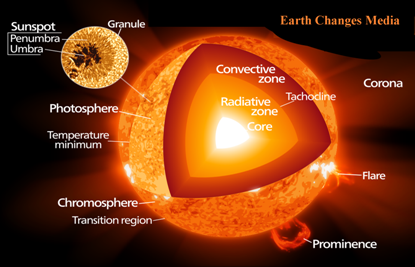NASA Hosts Media Conference on Sun Observations

by Mitch Battros - Earth Changes Media
NASA held a media teleconference on Wednesday, Jan. 23rd, to discuss new
observations of a large active region in the Sun's atmosphere called the
corona.

A discovery made by NASA's High-Resolution Coronal Imager, or Hi-C, has
revealed surprising magnetic 'braids' of super-hot matter in the Sun's
outer atmosphere which is suggested to be the cause of why the Sun's
atmosphere is hotter than its surface.
Jonathan Cirtain, a solar astrophysicist at NASA's Marshall Space Flight
Center said: "With potential annual economic impacts of tens to hundreds
of billions of dollars domestically during periods of high solar
activity, accurate forecasts of the local space weather environment can
possibly save billions for power systems, commercial aircraft and a
number of other economic sectors [such as extreme weather events]"

The Sun's surface can reach a scorching temperature of 5,700 degrees
Kelvin, but the Sun's atmosphere "corona" can reach temperatures of up
to 4,000,000,000 degrees Kelvin. Cirtain states: "What we have observed
is a bundle of magnetic fields, wrapped about several other bundles to
form a magnetic bundle ensemble."
1 KELVIN = 458 degrees Fahrenheit or 272 degrees Celsius
These magnetic fields are physically manifested within
the super-hot plasma making up the Sun. For instance, very highly curved
magnetic fields can take the form of coronal loops, giant arches rising
from the Sun.

The Making of Solar Flares, CMEs, and Coronal Holes
When a magnetic field becomes highly curved, it eventually becomes
unstable. Eventually these magnetic 'braids' can grow unstable enough
for individual magnetic field lines of force to interact within them.
This phenomenon, known as reconnection, decreases the curvature of the
magnetic field, releasing potentially vast amounts of energy that can
heat plasma or accelerate solar flares and other massive outbursts.
The team of researchers hopes to launch their telescope in an orbital
satellite to observe the corona longer.